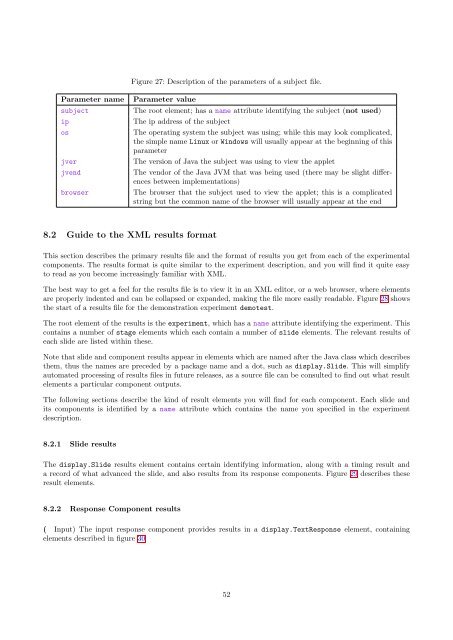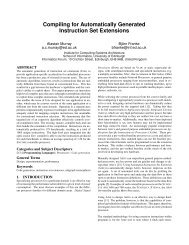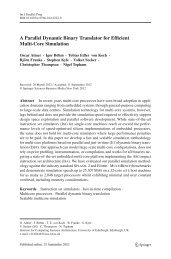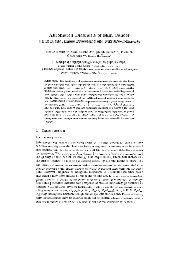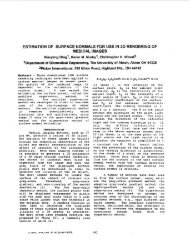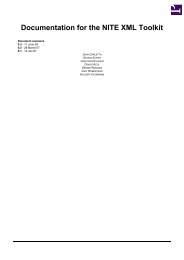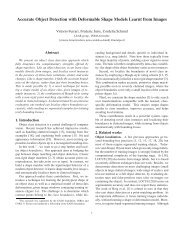WebExp2 Experimenter's Manual - School of Informatics - University ...
WebExp2 Experimenter's Manual - School of Informatics - University ...
WebExp2 Experimenter's Manual - School of Informatics - University ...
You also want an ePaper? Increase the reach of your titles
YUMPU automatically turns print PDFs into web optimized ePapers that Google loves.
Figure 27: Description <strong>of</strong> the parameters <strong>of</strong> a subject file.<br />
Parameter name<br />
subject<br />
ip<br />
os<br />
jver<br />
jvend<br />
browser<br />
Parameter value<br />
The root element; has a name attribute identifying the subject (not used)<br />
The ip address <strong>of</strong> the subject<br />
The operating system the subject was using; while this may look complicated,<br />
the simple name Linux or Windows will usually appear at the beginning <strong>of</strong> this<br />
parameter<br />
The version <strong>of</strong> Java the subject was using to view the applet<br />
The vendor <strong>of</strong> the Java JVM that was being used (there may be slight differences<br />
between implementations)<br />
The browser that the subject used to view the applet; this is a complicated<br />
string but the common name <strong>of</strong> the browser will usually appear at the end<br />
8.2 Guide to the XML results format<br />
This section describes the primary results file and the format <strong>of</strong> results you get from each <strong>of</strong> the experimental<br />
components. The results format is quite similar to the experiment description, and you will find it quite easy<br />
to read as you become increasingly familiar with XML.<br />
The best way to get a feel for the results file is to view it in an XML editor, or a web browser, where elements<br />
are properly indented and can be collapsed or expanded, making the file more easily readable. Figure 28 shows<br />
the start <strong>of</strong> a results file for the demonstration experiment demotest.<br />
The root element <strong>of</strong> the results is the experiment, which has a name attribute identifying the experiment. This<br />
contains a number <strong>of</strong> stage elements which each contain a number <strong>of</strong> slide elements. The relevant results <strong>of</strong><br />
each slide are listed within these.<br />
Note that slide and component results appear in elements which are named after the Java class which describes<br />
them, thus the names are preceded by a package name and a dot, such as display.Slide. This will simplify<br />
automated processing <strong>of</strong> results files in future releases, as a source file can be consulted to find out what result<br />
elements a particular component outputs.<br />
The following sections describe the kind <strong>of</strong> result elements you will find for each component. Each slide and<br />
its components is identified by a name attribute which contains the name you specified in the experiment<br />
description.<br />
8.2.1 Slide results<br />
The display.Slide results element contains certain identifying information, along with a timing result and<br />
a record <strong>of</strong> what advanced the slide, and also results from its response components. Figure 29 describes these<br />
result elements.<br />
8.2.2 Response Component results<br />
( Input) The input response component provides results in a display.TextResponse element, containing<br />
elements described in figure 30<br />
52


